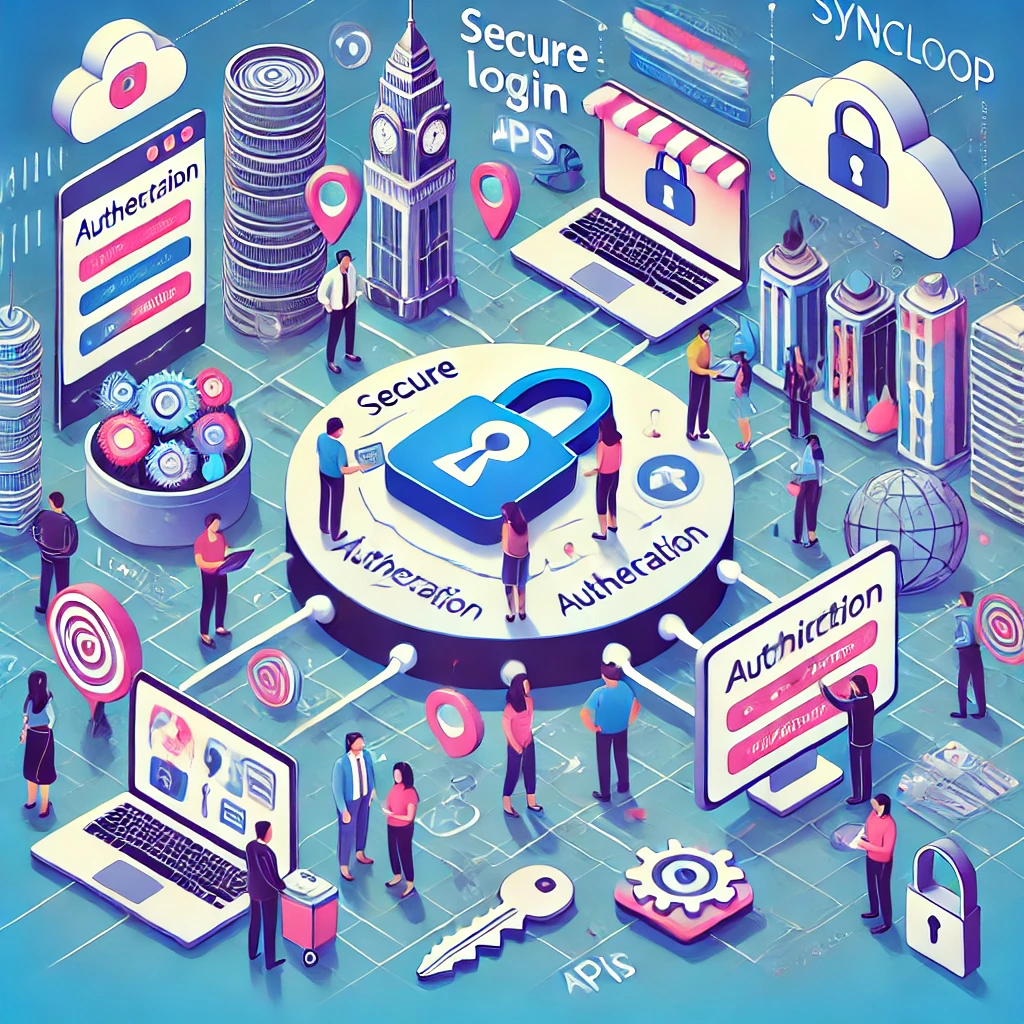How Syncloop Simplifies Authentication for Scalable APIs

In this blog, we’ll explore how Syncloop simplifies authentication for scalable APIs, the features it offers, and best practices for integrating authentication into your API workflows.
The Importance of Scalable Authentication
Authentication serves as the first line of defense for APIs. Effective authentication is critical for:
- Security: Protects sensitive data and prevents unauthorized access.
- User Experience: Ensures a seamless login experience without compromising security.
- Scalability: Handles increasing user traffic without affecting performance.
- Compliance: Meets regulatory requirements for data protection and user authentication.
How Syncloop Simplifies API Authentication
Syncloop provides a robust framework to implement secure and scalable authentication mechanisms for APIs:
1. Support for Multiple Authentication Methods
Syncloop supports industry-standard authentication protocols, including:
- OAuth 2.0: For secure and token-based authentication.
- OpenID Connect: For single sign-on (SSO) and user identity verification.
- API Keys: For lightweight authentication in less sensitive scenarios.
- JWT (JSON Web Tokens): For stateless and scalable user authentication.
2. Centralized Access Control
Syncloop enables centralized management of authentication rules, simplifying updates and ensuring consistency across APIs.
3. Role-Based Access Control (RBAC)
With RBAC, Syncloop allows developers to define roles and permissions, ensuring users only access the resources they are authorized for.
4. Token Management
Syncloop provides tools to generate, validate, and revoke access tokens, ensuring secure and efficient authentication workflows.
5. Integration with Identity Providers
The platform integrates seamlessly with third-party identity providers like Google, Microsoft Azure AD, and Okta, enabling SSO and federated authentication.
6. Scalable Infrastructure
Syncloop’s architecture ensures authentication processes scale to handle high volumes of requests without latency or downtime.
7. Real-Time Monitoring
Track authentication attempts, usage patterns, and anomalies with Syncloop’s monitoring tools, enabling proactive security measures.
Benefits of Using Syncloop for Authentication
1. Enhanced Security
Robust authentication mechanisms protect sensitive data and prevent unauthorized access.
2. Simplified Management
Centralized tools and seamless integrations reduce the complexity of managing authentication workflows.
3. Improved Scalability
Syncloop’s infrastructure supports high traffic volumes and dynamic user bases, ensuring consistent performance.
4. Faster Development
Prebuilt authentication modules and intuitive tools reduce development time and effort.
5. Better User Experience
Features like SSO and token-based authentication enhance usability while maintaining security.
Real-World Applications of Syncloop Authentication
1. SaaS Platforms
Syncloop provides secure authentication for SaaS applications, enabling multi-tenant user management and seamless integrations.
2. E-Commerce Websites
Authentication APIs ensure secure access to customer accounts, payment systems, and personalized features.
3. Financial Services
Robust authentication protects sensitive financial data and ensures compliance with industry regulations like PCI DSS.
4. IoT Applications
APIs authenticate devices and users in IoT ecosystems, securing data exchange and device interactions.
Best Practices for API Authentication with Syncloop
- Choose the Right Method: Use OAuth 2.0 or OpenID Connect for secure, scalable authentication in most scenarios.
- Implement RBAC: Define roles and permissions to restrict access to sensitive resources.
- Secure Tokens: Use HTTPS for token transmission and store tokens securely on the client side.
- Monitor and Audit: Track authentication attempts and anomalies with Syncloop’s monitoring tools to detect potential threats.
- Enable Token Revocation: Provide mechanisms to invalidate tokens in case of compromise or logout.
- Integrate SSO: Use SSO to streamline user authentication and enhance the user experience.
Conclusion
Authentication is essential for API security and scalability, and Syncloop provides the tools to implement it effectively. By supporting industry standards like OAuth 2.0, RBAC, and federated authentication, Syncloop ensures APIs remain secure, user-friendly, and capable of handling increasing traffic demands.
Whether you’re building SaaS platforms, e-commerce systems, or IoT applications, Syncloop simplifies the authentication process, allowing developers to focus on innovation. Embrace Syncloop to enhance the security and scalability of your API ecosystem.
A conceptual illustration of an API authentication workflow powered by Syncloop, showcasing token-based authentication, role-based access control, and real-time monitoring.
Back to Blogs